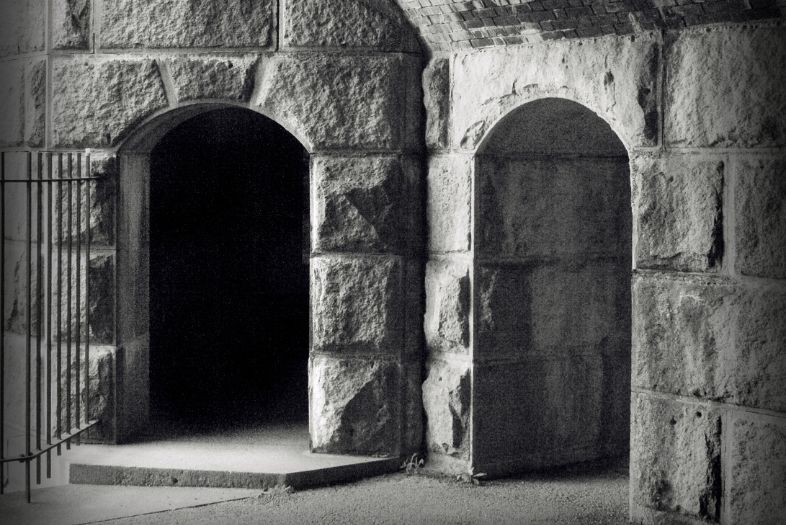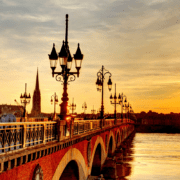
Catacombs of Saint-Émilion: exploring historical depths
Would you like to know more about the mysterious Catacombs of Saint-Émilion? It’s certainly one way to learn about the history and heritage of this wine-growing region. With their hidden passageways and ancient chambers, they offer a unique perspective of the town, away from the vineyards and cobbled streets.
For those looking for a complete and enriching experience, we recommend a free tour of Saint Emilion. These tours not only cover the famous catacombs, but also reveal stories and secrets of the village, making each visit an unforgettable adventure.
History of Saint-Émilion
This picturesque village in the Aquitaine region is a hidden treasure, a place where the past intertwines with the present. Known for its exceptional heritage and world-renowned vineyards, Saint-Émilion is a must-see destination for wine and history lovers.
From taking part in a free tour to discover its cobbled streets to enjoying a wine tasting in Saint Emilion at one of its prestigious wineries. Exploring the historical sites of what to see in Saint Emilion is to delve into the reasons behind the evolution of this region.
The origins of this village date back to the 8th century, when the monk Émilion, a confessor at the court of the King of Brittany, decided to settle in a hermitage dug into the rock which today bears his name. The town grew up around this religious site, becoming an important place of pilgrimage in the Middle Ages.
The catacombs, churches and monasteries that were built, many of which can still be visited today, offer a glimpse into a spiritual and austere past.
Over the centuries, it became a vital centre for commerce, especially in wine, which fuelled its economic and cultural development. This wealth is reflected in the town’s distinctive architecture. You’ll see Romanesque and Gothic churches, monastic ruins, and ancient walls that tell the story of its prosperous and sometimes turbulent past.
The historical importance of Saint-Émilion in the Aquitaine region cannot be underestimated. It has been a silent witness to the changing powers and fortunes of the region, from Roman times to the present day. The inclusion of Saint-Émilion as a UNESCO World Heritage Site in 1999 recognises its exceptional wine production.
The catatombs
The catacombs of Saint-Émilion, a fascinating underground network, are an essential stop for anyone considering a visit to Saint Emilion worthwhile. These ancient structures are testament to the rich history of Bordeaux and the surrounding area, a palpable reminder of the historical depths that lie beneath visitors’ feet.
The catacombs lie just below the monolithic church, an architectural marvel in itself, carved entirely out of limestone rock. These underground structures are famous for their impressive size and antiquity. Excavated in the Middle Ages, they extend over a considerable area, forming a network of tunnels and chambers that have survived over the centuries.
The importance of the catacombs in the context of history is indisputable. They originally served as a burial place and as an integral part of the religious and social practice of the city.
Each chamber and niche in these catacombs tells a story: from the daily life of the inhabitants of Saint-Émilion to the most significant moments in its history. They are a testament to the skill and engineering of the builders of the time and offer a unique insight into the funerary and religious practices of the Middle Ages.
Exploring the depths
To explore the Catacombs of Saint-Émilion is to immerse yourself in a hidden world beneath one of the beautiful villages near Bordeaux. This underground journey begins in the imposing monolithic church of Saint-Émilion. Here, visitors are transported from the cobbled streets of a charming village into the depths of history.
One of the first points of interest on this journey is the Chapelle de la Trinité, a hidden sacred space before you enter the catacombs. Despite its apparent austerity, it is a place of deep spirituality, decorated with relics and frescoes that have defied the passage of time.
The tour of the catacombs begins by descending stone steps, eroded by centuries of pilgrims and onlookers. As visitors enter the earth, they are greeted by cool, damp air, a stark contrast to the climate outside.
The hand-carved limestone walls tell stories of devotion and art. Each step leads deeper into the heart of the history of this place.
Further on, the tour takes visitors through a series of tunnels and burial chambers.
The interior of this sacred structure is characterised by a vast dome sculpted within a wide shaft. This is adorned with carved figures of three men, whose outstretched arms symbolise the resurrection.
The illumination emanating from the well, resembling a lantern, represents the path to heaven. The triangular designs at the base of the well illustrate the different stages towards purgatory.
Within this final resting place, two groups were buried: firstly, prominent members of the monastic order, and secondly, the local aristocrats, distinguished by more ornate tombs. There is also an area reserved for young children, where small graves have been carved into the walls.
A remarkable aspect of the catacombs is their unique architecture. The skill with which these structures were carved out of the rock is a testament to the mastery of medieval craftsmen.
Admission is 15 euros and the visit lasts about 45 minutes.
Impact on tourism and the local economy
A visit to the catacombs becomes an essential part of the tourist experience in Saint-Émilion. Tourists, by exploring these ancient structures, extend their stay in the town to enjoy other attractions.
In addition, the wine industry, which is a mainstay of the economy in Saint-Émilion, also benefits, as many visitors often combine their visit to the catacombs with wine tastings and vineyard tours.
In addition to the catacombs, this place and its surroundings offer a variety of attractions that enrich the visitors’ experience. The village itself is a sight to behold, with its medieval buildings, churches and squares. Guided tours of the village provide a historical and cultural context that complements the experience in the catacombs.
The vineyards, as mentioned above, offer not only wine tastings but also the opportunity to learn about viticulture and the history of wine in the region.



